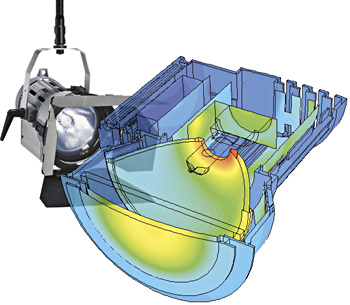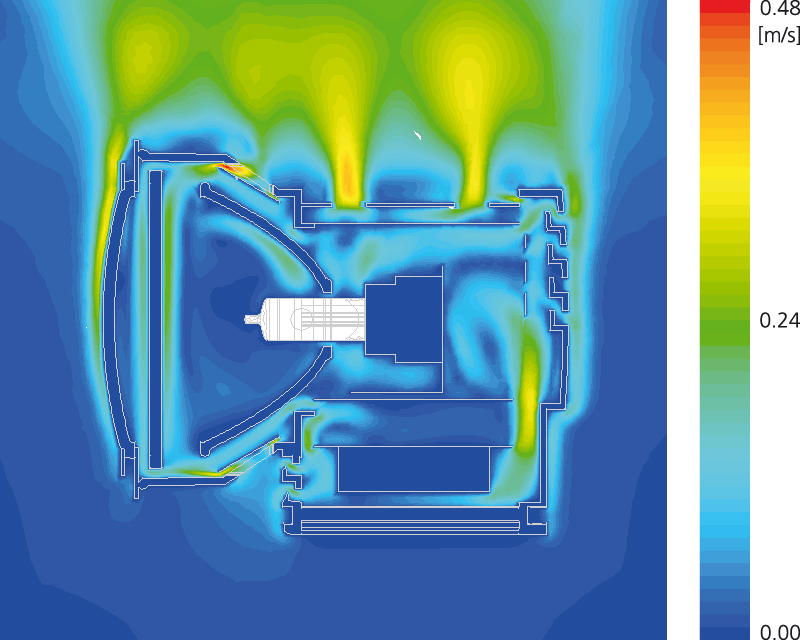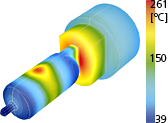Temperature and Surface Radiation
The heating of the floodlight is primarily due to surface radiation, which is emitted from the wreath filament depending on its temperature and thermal output, and is subsequently subject to multiple reflections within the floodlight. Other components of the floodlight case are also radiating, depending on their temperature. In the interior of the primarily metallic components of the floodlight, heat is transported by usual heat conduction.
The air is now heated at the surfaces of these components, which initiates a convective flow. This convective flow has been modeled by the Navier-Stokes equations and the so-called Boussinesq approximation. The temperature-depending differences of density in the air are only accounted for by a so-called lift term of the impulse equation, they are not accounted for in the continuity equation.
FLUENT® for Numerical Computations
Possibly disturbing sound waves are thus avoided from the beginning, which improves numerical stability and reduces computing times. At the contact interfaces, temperature continuity and the reduction to zero of the entire heat balance was required, whereas at the exterior boundaries of the computing domain, requirements were pressure continuity and the reduction to zero of the entire mass flow.
Numerical computations were carried out by the commercial software package FLUENT®, where discretized versions of the relevant equations are implemented. FLUENT® is a numerical method using the finite volume method; the computing domain must therefore be divided into smaller cells by a grid. However, the floodlight geometry is very complex, so that several geometry simplifications became necessary for the so-called meshing. These simplifications were to remain without essential influence on the results as far as possible.



